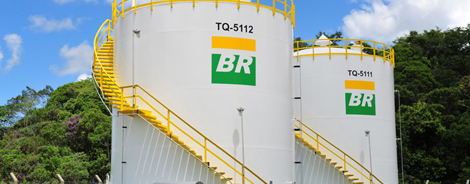Rising Brazil: The Choices Of A New Global Power
What should we expect from a newly powerful Brazil? Does the country have the capacity and leadership to be a central actor in addressing critical global and regional problems?
A Publication of The Dialogue
Brazilian state oil company Petrobras on April 1 said it would cut production by a total of 200,000 barrels per day. The company is also slashing planned investments this year from $12 billion to $8.5 billion, cutting operating expenses by $2 billion and reducing personnel expenses by $133 million. What are the most significant ways in which the plunge in international oil prices and the coronavirus pandemic have altered Petrobras’ plans for the period ahead? What do the company’s production and investment cuts imply for its financial stability, and which areas will be most affected? What consequences does the global context—with both lower prices and falling demand—have on Petrobras’ long-term strategies and on Brazil’s oil and gas sector in general?
Vera De Brito de Gyarfas, partner at Mayer Brown: “In recent years, Petrobras has taken important measures to become stronger financially, which will allow it to resist and survive the current global crisis resulting from the Covid-19 pandemic and the abrupt decline in oil prices. Petrobras divested a number of assets and is now a stronger and leaner company and probably the national oil company in Latin America best positioned to navigate the current oil price crisis. Petrobras’ decrease in investment will have a temporary detrimental impact on Brazil’s oil and gas industry. It is expected that once demand for crude returns, prices will rise to at least $30 per barrel at the end of 2020. Petrobras’ cost of lifting crude in the pre-salt is relatively low, approximately $5.03 per barrel, and the crude produced is light, which has a huge market in Asia. The pre-salt is an excellent investment for Petrobras and the other major international oil companies currently operating there. Petrobras’ announcement of the 200,000-barrel-per-day production cut is expected to be mostly from onshore production, which is more expensive and has fewer outlets. The immediate impact on Petrobras will be a decrease in cash flow. Petrobras’ long-term strategy will continue to focus on pre-salt, which has very competitive production costs. The capex involved is very high; therefore, the players involved are strong major oil and gas companies that will likely survive the downturn, as they have survived previous downturns. It is the smaller companies and oil and gas service providers that are more at risk.”
John Forman, director of J Forman Consultoria in Rio de Janeiro and former ANP director: “Petrobras is divesting many assets, not only due to the large debt it has to serve, but also in order to become an exploration and production company, to do what it knows best, in the words of its president, Roberto Castello Branco. It is a dangerous path. The company had been indicating that production costs for the pre salt were between $7 and $8 per barrel. More recently, it said $21 per barrel is its breakeven price. Consumption is declining all over, as are prices due to the price war and the coronavirus. It is understandable that production from the more costly wells should be cut, an option that may be reinforced, depending on the evolution of market prices. The international price war scenario weighs much more than the coronavirus. Concentrating in exploration and production at a time of low prices affects the company more than when it had other sources of income. It becomes more fragile, and, in the years to come, this strategy may be questioned. The steep carbon reduction in economies, like in Europe, is a major threat to the use of crude for fuel production. Thus, concentrating on exploration and production, in an attempt to use the pre salt hydrocarbons as much and as soon as possible, and giving up assets that could contribute to the company’s cash flow, leads to a reduced flexibility to meet debt needs and fewer resources to develop new production areas. At present, the exploration and production budget has not been greatly affected as the aim is to ensure production. However, the market is not showing signs of being ready to absorb larger volumes of oil and gas in the near future, endangering the company’s only source of cash. The low prices affect the royalties and special participations as well as production sharing, enormously reducing the payments to all levels of government, at a time when they are in dire need of resources to meet budget demands amid deficits that are already huge.”
Cleveland Jones, professor and researcher at the National Institute of Oil and Gas at the State University of Rio de Janeiro: “Petrobras has become much more proactive than in the past, in relation to major industry and world events. In the past, we might have expected Petrobras to react to the current oil crisis of low prices, oversupply and extreme uncertainty, by displaying an inflexible corporate response. Nowadays, it is capable of quick adjustments. A 200,000-barrel-per-day cut in production will not hurt its bottom line much, especially since low oil prices reduce economic incentives, and 23,000 barrels per day of that reduction is shallow water production, among the least economically viable for Petrobras. The balance of cuts will come from other assets that are also relatively unattractive. Overall, the decision to cut low-margin production is consistent with its strategy of focusing its business on assets with high potential and divesting assets with less attractive production. As to projected capital expenditures for 2020, the decision to cut investment is consistent with the current oil price scenario, and it does not impair future potential, since those cuts could be reversed quickly. Reduced exploratory expenditures will not mean reduced production in the near future, since Petrobras has a vast array of exploratory assets and a full pipeline of assets that could be brought into production even if exploratory activities are delayed for some time. Given Petrobras’ low breakeven for major projects, less than $40 per barrel and falling, large new projects will be economically viable again even if prices rebound only modestly. In the meantime, Petrobras can continue producing at some of the world’s lowest lifting costs per barrel ($5.60 per barrel for the pre-salt fields)."
Nathália Weber Neiva Masulino, researcher at the Research Centre for Gas Innovation (RCGI) at the University of São Paulo: “Petrobras’ strategy to address the drop in demand and oil prices faced by the global oil and gas industry follows international trends of investment and production cuts. Given the new scenario, the company has reinforced its portfolio management focused on pre-salt and cut administrative and operational costs, mainly affecting exploration activities, interconnection of wells and construction of production and refining facilities. Petrobras had been conducting an aggressive divestment program and saw its production increase significantly since the former crisis, resulting in debt reduction and better profitability. These efforts might have made the company stronger to deal with the current low price scenario, as compared to the one in 2014. The current oversupply and fall in demand will have further impacts, especially on the pressure over Petrobras' financial leverage, since divestment policy efforts are at risk now. The present situation does not favor asset pricing and creates enormous uncertainties in the upstream sector, risking ongoing and planned divestment negotiations. Petrobras has been adopting a strategy of analyzing currency exchange and crude oil prices to decide oil products' prices. The problem now is that the impact of such a strategy will be significantly lower, due to the fail in oil products demand. Petrobras’ exposure to international market volatility—related to the company’s focus on exploration and production and the Chinese market—will not be easily balanced by this strategy, since a large impact on demand for gasoline and diesel is expected in the coming months. Beyond concerns over the breakeven, the pressure on Petrobras’ financial leverage brings many doubts about its stability. With debt tied to the dollar, the devaluation of the real against the U.S. currency deepens the company’s indebtedness, and the unfavorable scenario for asset pricing undermines the divestment policy. The current scenario of uncertainties regarding the world economy and changes in Petrobras’ plans dash hopes for resuming drilling activities from the latest auctions and put at risk ongoing and future divestment negotiations.”
 The Latin America Advisor features Q&A from leaders in politics, economics, and finance every business day. It is available to members of the Dialogue’s Corporate Program and others by subscription.
The Latin America Advisor features Q&A from leaders in politics, economics, and finance every business day. It is available to members of the Dialogue’s Corporate Program and others by subscription.
What should we expect from a newly powerful Brazil? Does the country have the capacity and leadership to be a central actor in addressing critical global and regional problems?
President Lula da Silva triumphantly announced that he and his Turkish counterpart had persuaded Iran to shift a major part of its uranium enrichment program overseas—an objective that had previously eluded the US and other world powers. Washington, however, was not applauding.
An upcoming meeting between Presidents Obama and Rousseff should not be expected to produce dramatic news or unexpected major breakthroughs.
 File Photo: Petrobras.
File Photo: Petrobras.